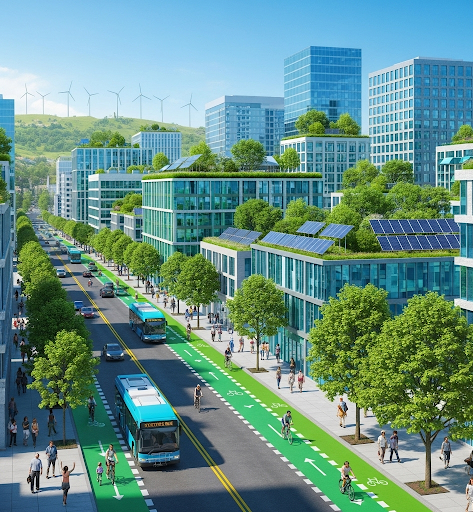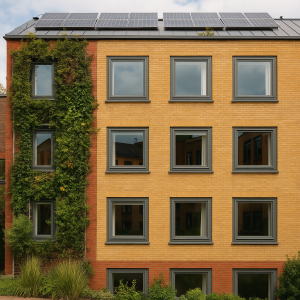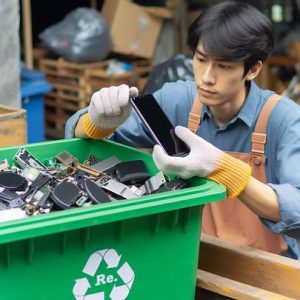The Environmental Cost of Beauty: How Supplement Production Affects Our Planet

Every year, the beauty and wellness industry produces millions of tons of plastic waste from packaging alone. From creams to capsules, the quest for beauty often hides an invisible footprint, the environmental cost behind the products we use daily. While supplements promise glowing skin, stronger nails, or quick weight gain, their production, packaging, and shipping carry a heavy toll on our planet.
Many beauty supplements, including popular ones like super apeti pills, highlight how consumer demand drives continuous manufacturing and global distribution. These products travel thousands of miles before landing on store shelves or doorsteps. Each shipment contributes to carbon emissions from transport vehicles and planes. When combined with energy-heavy production methods, the environmental impact becomes difficult to ignore.
The Hidden Cost of Supplement Manufacturing
Behind every capsule lies a complex chain of production. Factories that create beauty and weight-gain products often rely on non-renewable energy sources. The process of extracting, refining, and synthesizing ingredients consumes significant amounts of water and electricity. Even “natural” supplements have an impact, as farming for raw materials can lead to deforestation and soil degradation.
Wastewater and chemical byproducts are another major concern. Certain factories release untreated waste into nearby rivers, harming local ecosystems. The manufacturing of synthetic additives or preservatives often involves petrochemicals, which release greenhouse gases into the atmosphere. These hidden costs rarely appear on product labels but have long-term consequences for biodiversity and air quality.
Packaging: The Beauty Industry’s Plastic Problem
Packaging plays a huge role in the environmental story of beauty products. Shiny bottles, colorful boxes, and single-use sachets are designed for visual appeal, not sustainability. Most packaging materials are made of plastic that cannot be recycled easily due to mixed layers of polymers and metallic coatings. This means millions of empty supplement containers end up in landfills or oceans each year.
Consumers are increasingly aware of this issue, yet sustainable alternatives remain limited. While some companies have switched to biodegradable packaging or refill systems, they represent only a small fraction of the market. The beauty industry still prioritizes aesthetics and branding over environmental responsibility. For a deeper look into how modern consumption contributes to pollution and waste, check out this discussion on electronic waste and its environmental impact
Shipping Emissions and Global Distribution
From factory floors to your doorstep, every delivery adds to the carbon footprint. Air freight, in particular, generates high emissions per kilogram of transported goods. Since many supplements are imported from distant countries, their environmental cost multiplies quickly. A single container ship carrying tons of supplements burns through thousands of gallons of fuel, releasing sulfur and carbon dioxide into the air.
Online retail growth has intensified the problem. Fast shipping services promise next-day delivery, increasing fuel consumption and packaging waste. When a single bottle of beauty pills is shipped separately in plastic wrap or cardboard, it adds up across millions of orders. The convenience of online beauty shopping comes at an ecological price.
Choosing a Greener Beauty Routine
Consumers hold more power than they think. Small, conscious choices can push brands to adopt sustainable practices. Choosing local products reduces shipping emissions. Looking for eco-labels and refill options helps minimize packaging waste. Supporting brands that use renewable energy in production can also make a difference.
Before purchasing supplements, read beyond the claims. Ask questions like: How is it packaged? Where is it made? What materials are used? The answers can guide you toward more eco-friendly options that align with your values. Awareness is the first step toward change, and transparency from brands can help build trust between producers and buyers.
Reimagining Beauty for the Planet
The future of beauty depends on balance—between self-care and environmental care. As demand grows for wellness products like super apeti pills, the industry must confront its environmental responsibilities. Manufacturers can switch to renewable energy, reduce plastic use, and adopt ethical sourcing practices. Consumers, meanwhile, can support these efforts by choosing responsibly and holding companies accountable.
Real beauty should not come at the planet’s expense. The journey toward sustainability begins with awareness and action—choosing products that nourish both the body and the Earth. When consumers and brands work together, the beauty industry can transform from a source of waste to a force for good.
Ultimately, the environmental cost of beauty can be reduced if we rethink how we produce, package, and consume supplements like super apeti pills. With each purchase, we cast a vote for the kind of planet we want to live in—one that values both wellness and sustainability.


 Environmentalists face a daunting challenge in the digital age. The internet is full of information, but not all of it is accurate. For eco-conscious readers, researchers, and advocates, finding credible resources is crucial. Curated platforms act as guiding lights, helping users access authentic articles, government reports, and NGO updates while avoiding misinformation.
Environmentalists face a daunting challenge in the digital age. The internet is full of information, but not all of it is accurate. For eco-conscious readers, researchers, and advocates, finding credible resources is crucial. Curated platforms act as guiding lights, helping users access authentic articles, government reports, and NGO updates while avoiding misinformation.
 For cities seeking to meet sustainability goals and businesses aiming to reduce energy costs, commercial retrofitting presents a practical path forward. Instead of tearing down old buildings and starting fresh,
For cities seeking to meet sustainability goals and businesses aiming to reduce energy costs, commercial retrofitting presents a practical path forward. Instead of tearing down old buildings and starting fresh,  Electronic waste, or e-waste, includes discarded electronic devices such as smartphones, laptops, televisions, and batteries. As technology advances, people replace their devices more frequently, leading to an overwhelming amount of waste.
Electronic waste, or e-waste, includes discarded electronic devices such as smartphones, laptops, televisions, and batteries. As technology advances, people replace their devices more frequently, leading to an overwhelming amount of waste.




